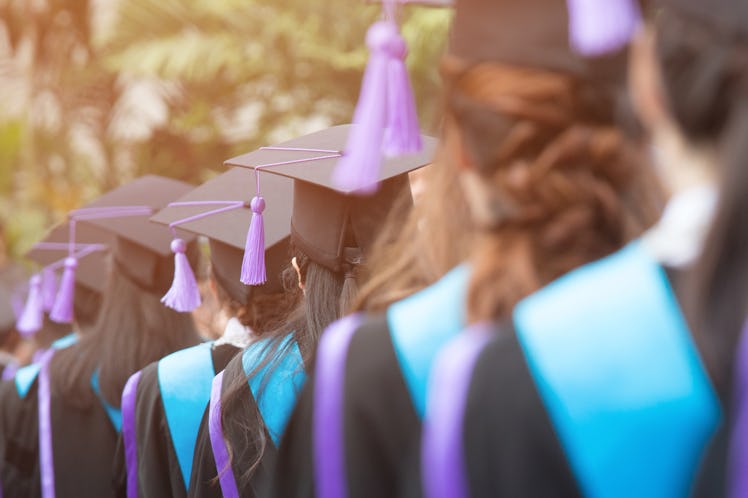
Wait, This New Student Debt Forgiveness Policy Change Is Huge
Around 40,000 people could see "immediate forgiveness," per the DOE.
At this point, pretty much everyone knows affording a college education in the United States means going into crippling debt for many people. According to 2021 statistics from the Federal Reserve, nearly 50 million people carry student loan debt, with borrowers owing an average of over $30,000 each. However, things may get a whole lot better for at least 40,000 borrowers, thanks to some changes in the Department of Education (DOE) that could result in immediate student loan cancellation: This new student debt forgiveness policy could have a huge impact, and here’s how it may affect you.
In an April 20 press release, the DOE announced that it would take “actions to fix longstanding failures in [its] student loan programs” by addressing “years of administrative failures that effectively denied the promise of loan forgiveness to certain borrowers,” per U.S. Secretary of Education, Miguel Cardona. “Student loans were never meant to be a life sentence, but it’s certainly felt that way for borrowers locked out of debt relief they’re eligible for.”
Forgiveness, it’s important to note, isn’t quite the same as cancelation: The DOE already forgives federal student loans for some borrowers, under some conditions (like working in certain public-sector jobs and making payments perfectly for a certain number of years). However, the process can be labyrinthine, and many students eligible for debt cancellation still haven’t received the payment relief they’ve earned.
The DOE plans on remedying these “administrative failures” through a few methods: firstly, by ending “forbearance steering.” Many student loan servicers have been slammed for pushing borrowers towards forbearance, allowing them to stop making student loan payments temporarily. While this may seem like a good idea when you’re in a tight spot, in the long run, accrued interest rates may result in a higher balance than you originally borrowed. To address this, the DOE is increasing oversight of servicers’ forbearance use to make sure borrowers aren’t being taken advantage of, and allowing those who think they may have been incorrectly pushed towards forbearance to file a complaint.
The DOE also plans on tracking borrower progress in income-driven repayment (IDR) plans. IDR plans allow borrowers to make payments based on their income and family size — and after 20 to 25 years of payment, there’s the possibility of cancelling any remaining student debt. However, the DOE admits that student loan servicers haven’t been doing such a great job of tracking who’s eligible for debt forgiveness under these IDR plans. So, the department is conducting a one-time revision of income-driven repayment to “address past inaccuracies.”
The DOE claims that, when applied, these changes should “help at least 3.6 million borrowers move closer to debt forgiveness” — and that an estimated 40,000 borrowers could see “immediate debt cancellation” under the Public Service Loan Forgiveness Program (PSLF).
So, how do you find out of you qualify for immediate debt cancellation under the DOE’s new rules? Under PSLF, your federal student loans could be eligible for cancellation if you meet the criteria on the Federal Student Aid’s website here, or if you’ve made at least a decade’s worth of payments while working in the public sector. Additionally, the DOE says its new regulations will also help several thousand borrowers reach debt forgiveness through those income-driven repayment programs, which qualify borrowers for forgiveness after they’ve 20 to 25 year’s worth of payments.
OK, it’s not cancellation — but it’s a step. For now, borrowers can continue to keep their cash stashed, as President Joe Biden has extended the freeze on student loan payments until Aug. 31, 2022.